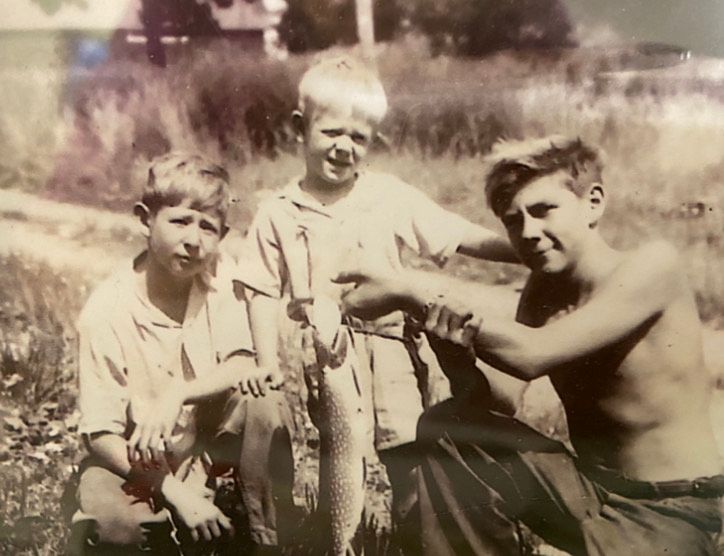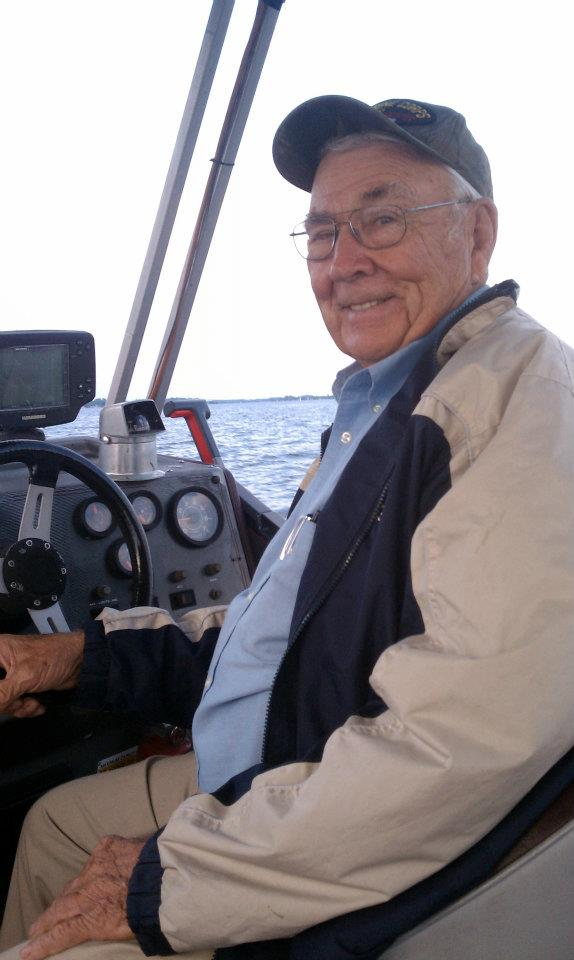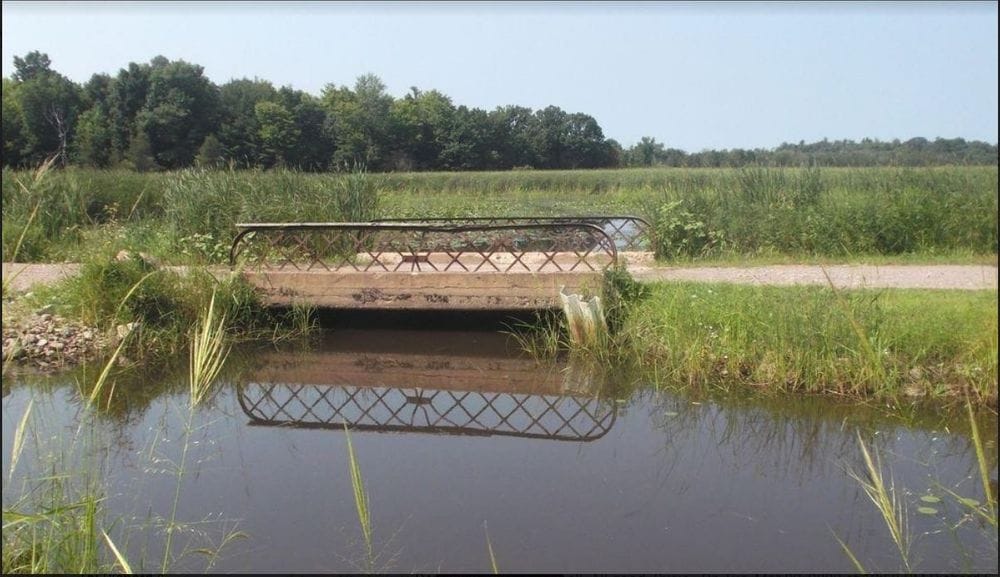Childhood Adventures at the Bridge on Grindstone Island
by: Manley L. Rusho
There is one man-made structure on Grindstone Island that is totally ingrained in my memory; the bridge at Delaney Bay. Oh yes, Walt Disney might have made a world of make-believe, however, long before Disney, we had the bridge on Grindstone Island, which simply was the source of many exciting adventures. There was a world of pure exploring, new adventures that included fishing, hunting, trapping, spearing, and netting, complete with: fish; muskrat; foxes; raccoons; skunks; ducks; cranes; crows; hawks; snakes; worms; and turtles – small and large, some with shells two feet in diameter. It was a young boy’s dreamworld.
The structure of the bridge was concrete, perhaps 15 feet long, with curbs on each side about a foot high extending the length of the bridge. A railing on each side consisted of flat two-piece steel that supported a lattice, all of which was embedded into the concrete. Stamped in the concrete was the name BW HART and the date 1908.

The bridge existed because a man named Charles Emery had purchased all of the land on both sides of the creek that the bridge spanned. About 1901, Emery constructed a dam across the creek; this dam is still there, about a mile from the mouth of Delaney Bay. Once the dam was in place, a steam-driven pump was installed on the eastern end of the dam. The water was removed from the southern side of the dam creating a vegetable farm to supply fresh vegetables to the huge hotel that Emery had built on Frontenac Island. The dam was formed by transporting huge chunks of granite from Emery’s mine on Picton Island.
I don’t know if the bridge was built to control the water or was just a bridge over the bay. It didn’t matter to me – it was part of my paradise. As you descend a small hill on the road from the Lower Schoolhouse, making a slight turn to the right, the road suddenly opens up into a canyon of giant marsh grass. The huge blocks of granite prevented the marsh and water from engulfing the road.
From the bridge, there was an open area of water on the north side that extended all the way to the mouth of the marsh, through the crooks and turns, passing Clark’s Point and on to the River. To the south, the stream wound and turned until it ended in my father’s cow pasture, a mile or more away; it was a true marsh, half a mile wide with deep holes and tiny islands made of floating bogs. It ended in a ditch that traversed the pasture from west to east. A true wildlife sanctuary, where birds and animals live without being managed by humans.
Beneath the bridge in the spring of the year, there was a flow of water about two feet deep that was controlled by the river level. North winds and the water flowed out, south winds brought a flood of water rushing into the south side of the marsh. And in this flow was a rush of fish – bullheads, perch, sunfish, rock bass, and small minnows, mixed with an occasional eel and northern pike hovering on the edge of the flow to nab their dinner. Large-mouth bass had not yet arrived for their mating and spawning.

A special memory
Arriving at our paradise one morning, my brother and I were pleased to see an old and frequent visitor to the bridge, Nate McCarty, a one-eyed old man. I didn’t know Nate’s age, but at 14 years old, anyone over 20 was old to me. Nate caught and sold minnows at his place in the Gut, between Wellesley and Murray Islands.
Nate’s boat was a rather long affair; flat bottomed, smooth sided, with a large tank forward that doubled as the only seat in the boat. The tank was where his catch of bait minnows was stored on the return trip to the Gut to sell. Toward the stern was a small, water cooled motor, single cylinder only partially enclosed. The flywheel was the starter and a section of hose that passed through the hull with the aid of a pipefitting expelled the water that cooled the engine. The cool, clear, pure River water was pumped through the engine, with a small pump attached at the rear of the engine, along with its attending grease cups.
Nate would sit on top of the engine and steer with two ropes that were attached to the rudder on the transom. In shallow water, two long oars propelled the vessel. His fishing nets covered the bridge opening, allowing thousands of the small fish, silvery and shiny creatures to be caught in his trap, any fish that were too small for bait were returned to the water to grow up. The suitable sized fish were put in to the tank on the boat.
By noon, Nate captured all of the bait he needed, a great lesson for me – never take more than you need. Pushing off the bridge, he rowed away down the creek toward the River and within minutes, we heard the sound of the little motor. A softly muffled putt-putt of the engine going further away from our world, leaving us with more memories. We returned to our play at the bridge, fishing for large-mouth bass and just about anything we could catch. We didn’t carry a watch because our stomachs always told us when to go home – we knew where our food was!
Header photo: The Grindstone Island Bridge photo courtesy of Thousand Islands Land Trust.
By Manley L. Rusho
Manley Rusho was born on Grindstone Island nine+ decades ago. Last year, in 2021, Manley started sharing his memories with TI Life. (Manley Rusho articles) This Editor and his many friends wish him continued good health and we thank him for sharing - as the life and times on Grindstone Island are special and should never be forgotten.
Editor's Note: Manley, last month in June, I was reminded once again, how lucky we are to have your memories. This month in July, your Lower Schoolhouse will open as a history resource center on Grindstone Island. We have a lot to be grateful for - thank you my friend.







Please click here if you are unable to post your comment.